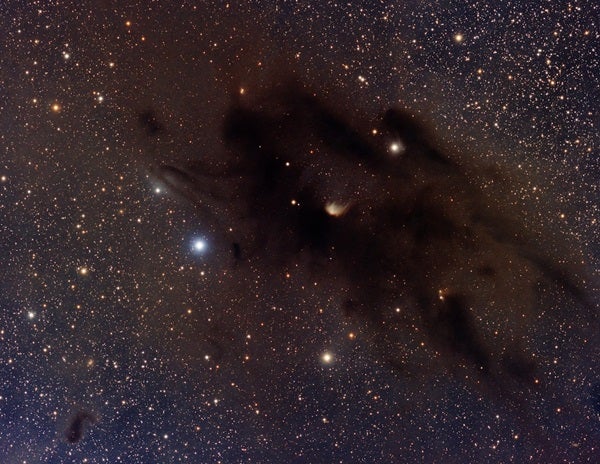Dust is the most common solid in the cosmos.
But don’t knock it. After all, solid is an important attribute, being the preferred phase of matter for things like money, motorcycles, ice cream, and many of your other favorite items. That extends to astronomy, too. Even if gases are awesome when they conjure a Horsehead or a Lagoon, and liquids are intriguing due to their extreme rarity, many astronomers prefer solid things — at least, planetary scientists do.
Most solids are anonymous, like the million tiny asteroids roaming unseen between Mars and Jupiter, gaining notice only once every billion years when one gets gravitationally perturbed and crashes into Earth to suddenly let rats rule for a while. True, nature has created some noteworthy solids, such as the Crab Pulsar, which is so dense that it matches what you’d get if you crushed down a cruise ship — retaining every ton of its steel and leftover morsels of strip steak — into the volume of the tip on a ballpoint pen.
A ship’s mass the size of a pen’s point! Glimpsing such an ultradense solid might alone justify buying a telescope. Yet observers seeing it in the Crab Nebula rarely realize that 16th-magnitude central dot is a solid ball.
Such visible solids are ultrarare beyond our own Kuiper Belt. But identifying the most plentiful ones should be easy. When we remember that the cosmos creates far more tiny objects than big ones — more minnows than whales and more viruses than heavyweight boxing champions — we ought to know that nature’s dominant solids are not pulsars or planets, but particles of dust. And fine dust must be more prevalent than coarser varieties. That’s why specks the size of the particulates in cigarette smoke rule the universe.
On Earth, however, we suffer from anti-dust prejudice. We scowl at the dirty coating on our primary mirror. We hate dust even if opticians warn us against this bias: “Leave your mirror alone,” they plead, arguing that an ugly dust layer barely diminishes its light-gathering ability. Cleaning that mirror, on the other hand, is far more likely to harm it with fine scratches. “Ignore dust,” they chant.
But not when we roam the cosmos. Out there, dust is cool. It scatters starlight with an attractive blue preference. Just as nitrogen and oxygen molecules scatter the Sun’s blue light to fashion our azure day sky, dust particles create gorgeous reflection nebulae whose aureoles surround the Pleiades. They concoct the cobalt fringes of the Orion Nebula and mix with its crimson emissions to give us rare, psychedelic, deep-space purples.
Then, after a star’s blue light has been scattered away, the remainder, robbed of shorter wavelengths, appears reddish. Partially submerged behind dust clouds called absorption nebulae, distant suns look ruddy — alluring telescope targets that lurk behind that haze like mysterious faces in a smoky bar.
We all know that dust isn’t equally apportioned. There’s little between galaxies and in globular clusters. But you can’t avoid it along the Zone of Avoidance, that wonderful old term for the Milky Way’s plane. When we enjoy its inky Rorschach patterns through binoculars, we follow in the footsteps of early 20th-century dirt-patch enthusiasts like E.E. Barnard, whose dust catalogs are still used today.
Dust is also what we hunt when observing edgewise galaxies like NGC 4565 in Coma Berenices. “Can you see the dust lane?” we excitedly ask our telescope visitor. Their yes means they’ve passed our astro-fraternity’s initiation ritual — except unlike the college version, they didn’t have to run through campus stark naked. Instead, they nobly confirmed the blockading of untold stars by 400 billion trillion tons of smoke.
Let’s end by finally exploring what dust is made of. Dust is either silicate or carbon based. In your bedroom, the dust in the air that settles at the rate of an inch (2.54 centimeters) an hour has many components, some of which are disgusting. There are countless minuscule human skin flakes and, if you live in a city, cockroach fragments. In space, where roaches are mostly confined to a few humid neighborhoods on Ganymede, analysis reveals that dust is always carbon based. And that carbon-based dust gives us the delicate, gauzy blue aura we see through our telescope eyepiece when we gaze at deep-sky targets.
Who’d have known dust could be so beautiful?










